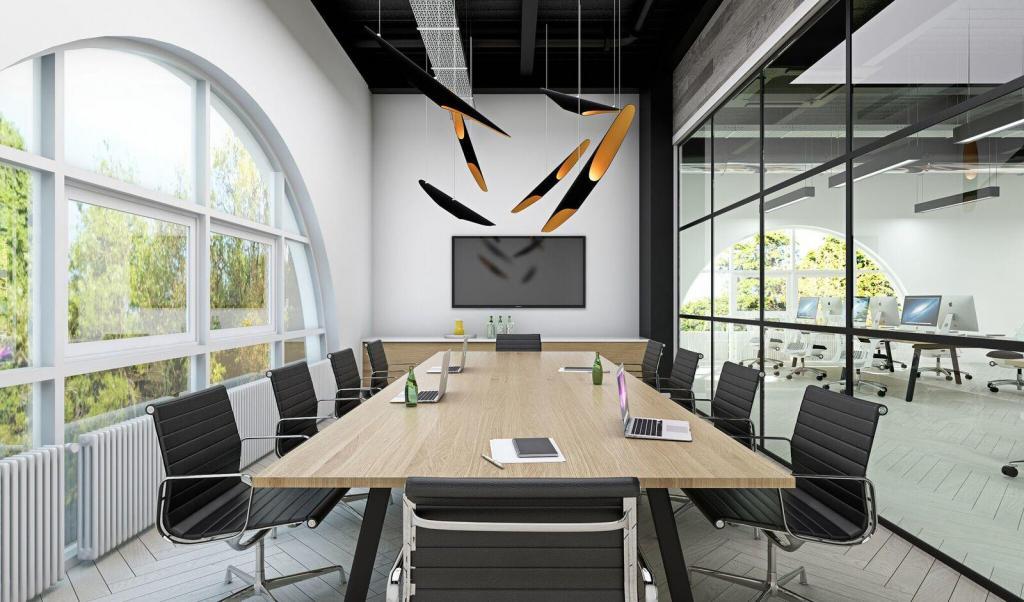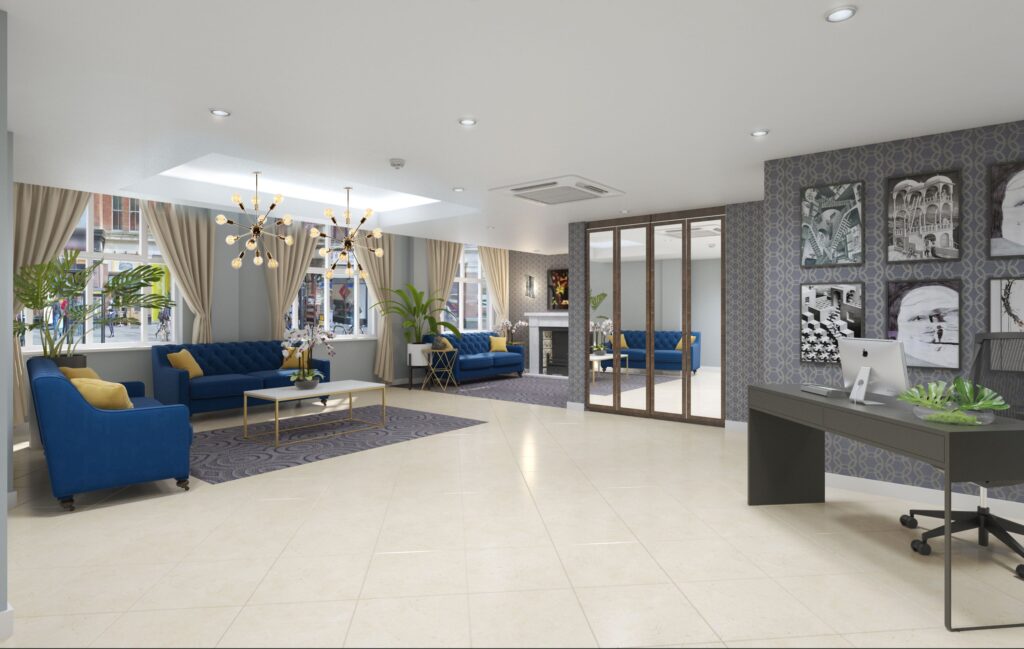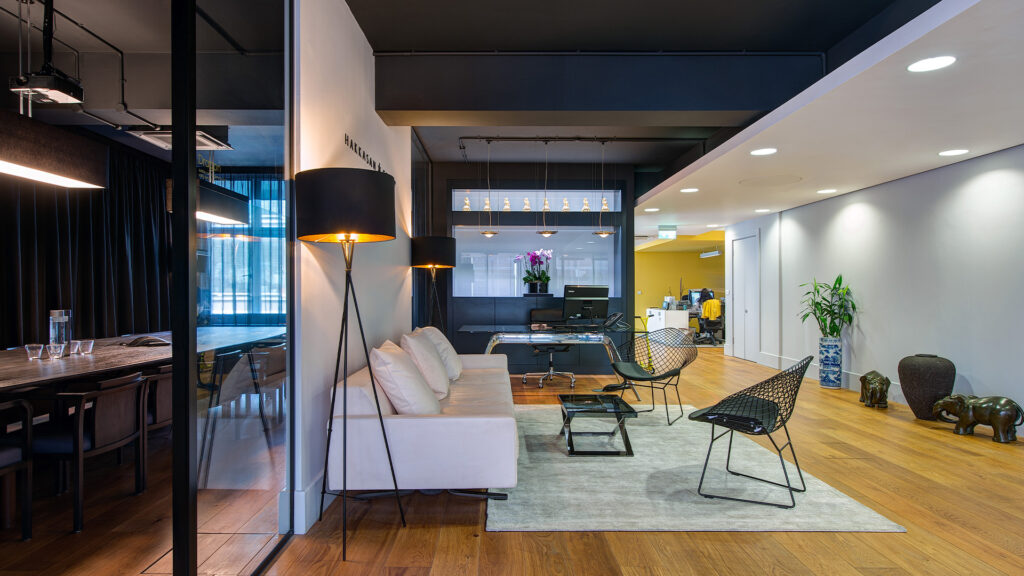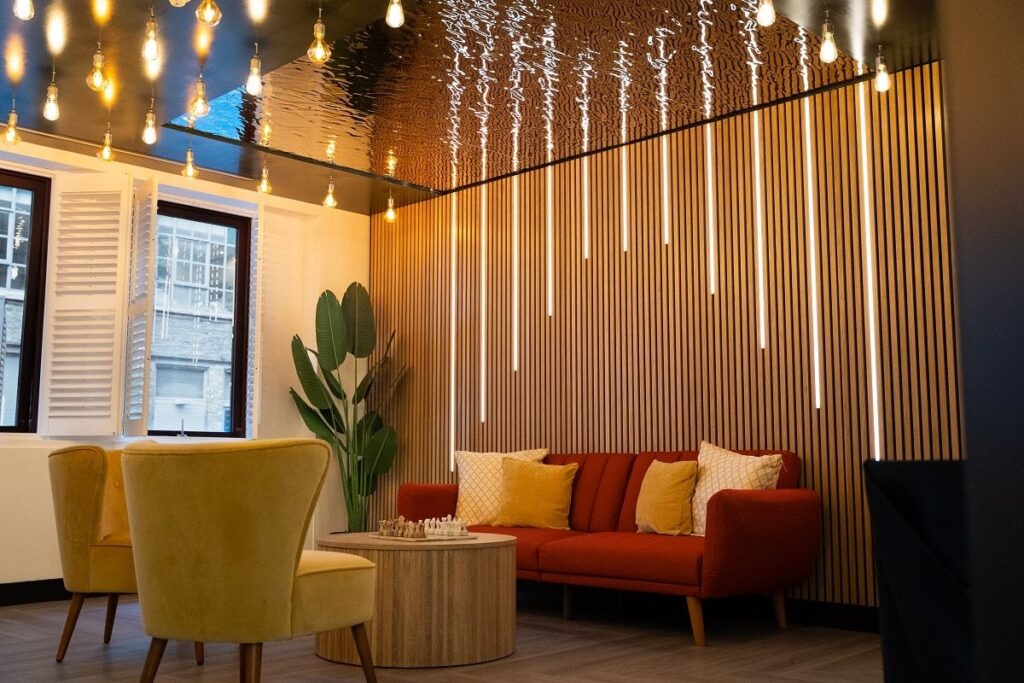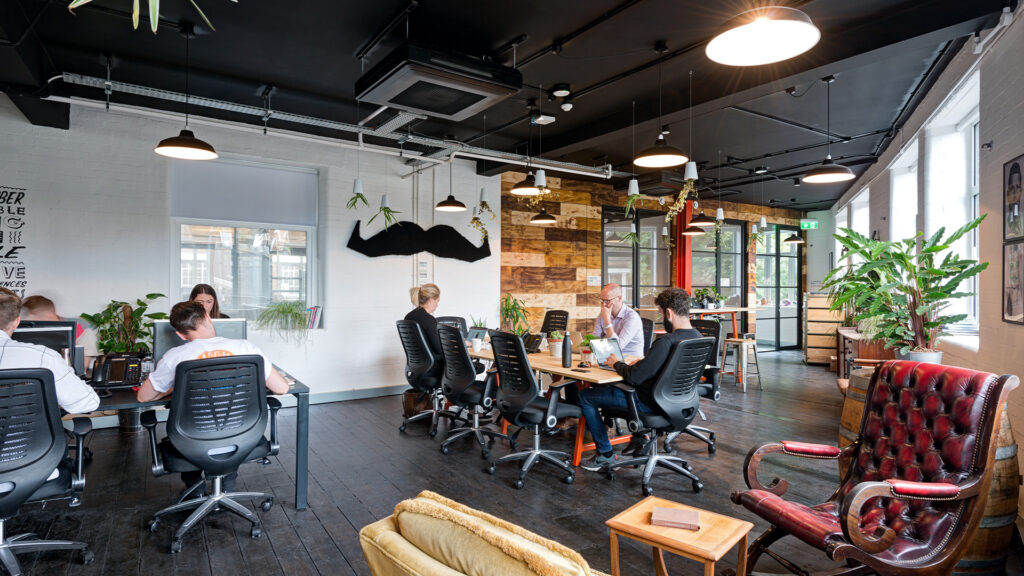A well-designed office does more than look good – it functions seamlessly, adapts to your team’s needs, and supports the way you work. That’s why one of the most talked-about elements in workplace design right now is the breakout area. But is it a must-have or just a nice-to-have?
What Is a Breakout Area?
A breakout area is a dedicated space away from desks, designed for:
- Informal work
- Casual meetings
- Relaxation
- Recharging.
Think of soft seating, low lighting, maybe some greenery or acoustic booths. This is not your typical boardroom, but somewhere between the café and the collaboration zone.
These zones can be open or enclosed, vibrant or calming, depending on your team’s needs and culture. This kind of space isn’t just about offering creature comforts. It reflects a shift in how we think about productivity.
In the hybrid era, businesses are recognising that heads-down focus time is just one piece of the puzzle. Teams also need places to connect, refresh, or break up the rhythm of the day.
You might like this guide: How Does Office Design Affect Productivity?
When Should You Introduce a Breakout Area?
Not every office is the same. Whether a breakout space works for you depends on your team, layout, and how your people work best. Some teams thrive on spontaneous collaboration, while others benefit from designated areas to pause and reset.
If your current layout feels rigid or uninspiring, or if you’re seeing signs of burnout or siloed working, it might be time to rethink the balance. Breakout areas can be the missing link between collaboration and concentration.
This is where office fit out specialists can really make a difference. They’ll assess your space, understand your team’s flow, and design a layout that makes breakout zones feel purposeful – not like an afterthought.
Why Do Breakout Areas Matter?
Breakout areas aren’t just trending for aesthetic reasons – they’re strategic.
- They support wellbeing: Offering staff somewhere to pause, chat or decompress helps reduce stress and boost morale. A quick coffee in a cosy corner can reset the mind far better than scrolling at your desk.
- They enhance collaboration: When people bump into each other in shared spaces, great ideas can spark. Casual conversations in relaxed settings often lead to solutions that might never surface in a formal meeting room.
- They reflect company culture: Design says a lot. A well-thought-out breakout space tells your team – and your visitors – that your business values people, not just output. It shows that your culture is progressive, people-focused, and built for the long term.
What Makes a Good Breakout Area?
Not all breakout spaces are created equal. A few beanbags and a coffee machine won’t cut it. Here’s what matters:
Intentional design
The best breakout areas are designed with purpose. Are they for collaboration or quiet time? Should they support short breaks or informal team catch-ups? Getting clear on function helps shape everything from lighting to furniture.
Acoustic control
It’s no use offering a break if people can still hear phones ringing or printers whirring. Soundproofing, soft furnishings and thoughtful zoning all help create true separation.
Comfortable, flexible furniture
This is the moment to step away from desk chairs and embrace more relaxed, adaptable seating — think modular sofas, stools, or even standing areas with laptop perches.
Natural elements
Plants, natural light and earthy textures go a long way in creating a calming space. They don’t just look good — they actively improve wellbeing and focus.
Accessibility and flow
Breakout areas should be easy to access but not intrusive. Ideally, they’re close enough to feel connected to the main space, yet distinct enough to offer privacy and calm. Positioning near natural light or quieter zones can enhance their usability, making them a natural extension of the workspace rather than an afterthought.
Do Breakout Areas Work in Smaller Offices?
Absolutely. You don’t need thousands of square feet to create a meaningful breakout zone. With the right planning, even compact spaces can include a booth, a nook, or a multifunctional area that shifts from solo work to casual chat with ease.
These zones can double as touchdown points, quiet corners, or informal meeting spots throughout the day. This is where smart office space planning comes into its own. A fresh layout or a small reconfiguration might be all that’s needed to unlock space you didn’t even know you had.
Read more: How Much Office Space Does Your Business Need?
Common Concerns (and How to Address Them)
Some business owners worry that breakout areas encourage time-wasting. But here’s the truth: when people feel trusted and supported, they’re more likely to be engaged, not less. These spaces can actually boost performance by reducing stress and encouraging creativity.
If you’re concerned about noise, zoning is key. With the right layout and acoustic planning, breakout areas won’t interrupt focus work, they’ll support it. And if you’re tight on space? A fit-out expert can identify multifunctional options that let a single area serve multiple purposes throughout the day, from solo work to impromptu team huddles.
More Than Just a Break – A Smart Move for Smarter Work!
Ready to reshape how your team works and feels at work? A breakout area isn’t just a stylish extra; it’s a smart move towards a more agile, people-focused office. By giving your team space to breathe, think, and connect, you’re investing in productivity, creativity, and wellbeing.
Whether it’s a quiet nook or a collaborative corner, the right breakout space can transform the way your workplace functions. Start building a workspace that works for your people, not just your laptops.








